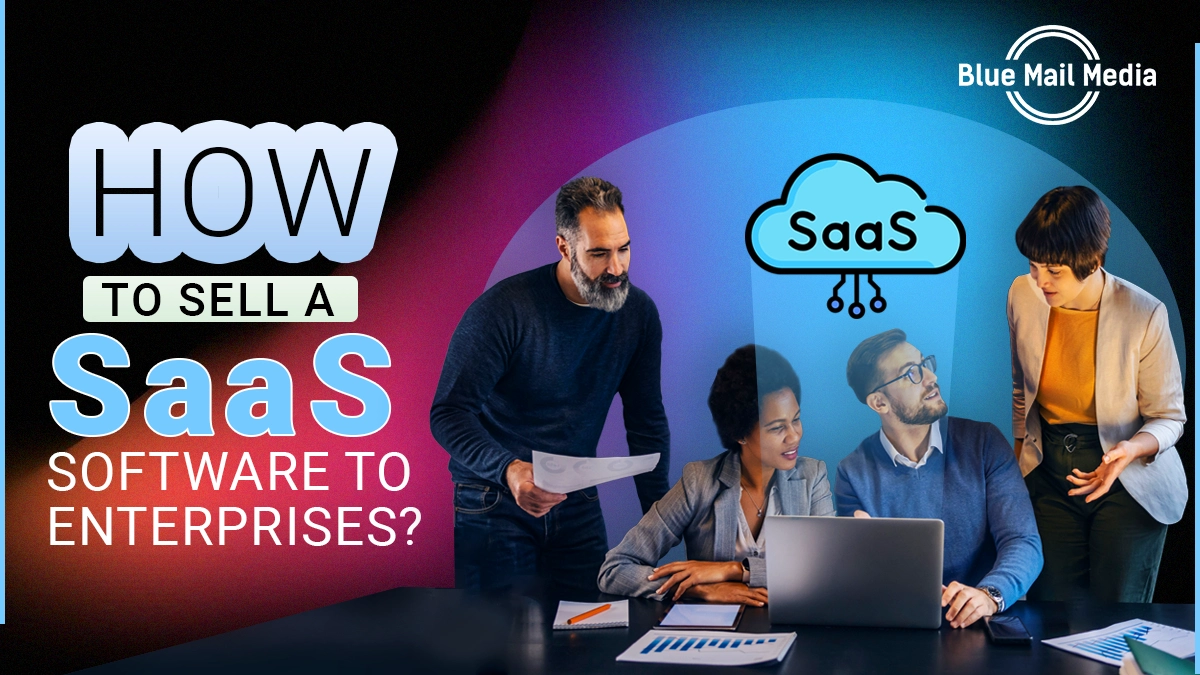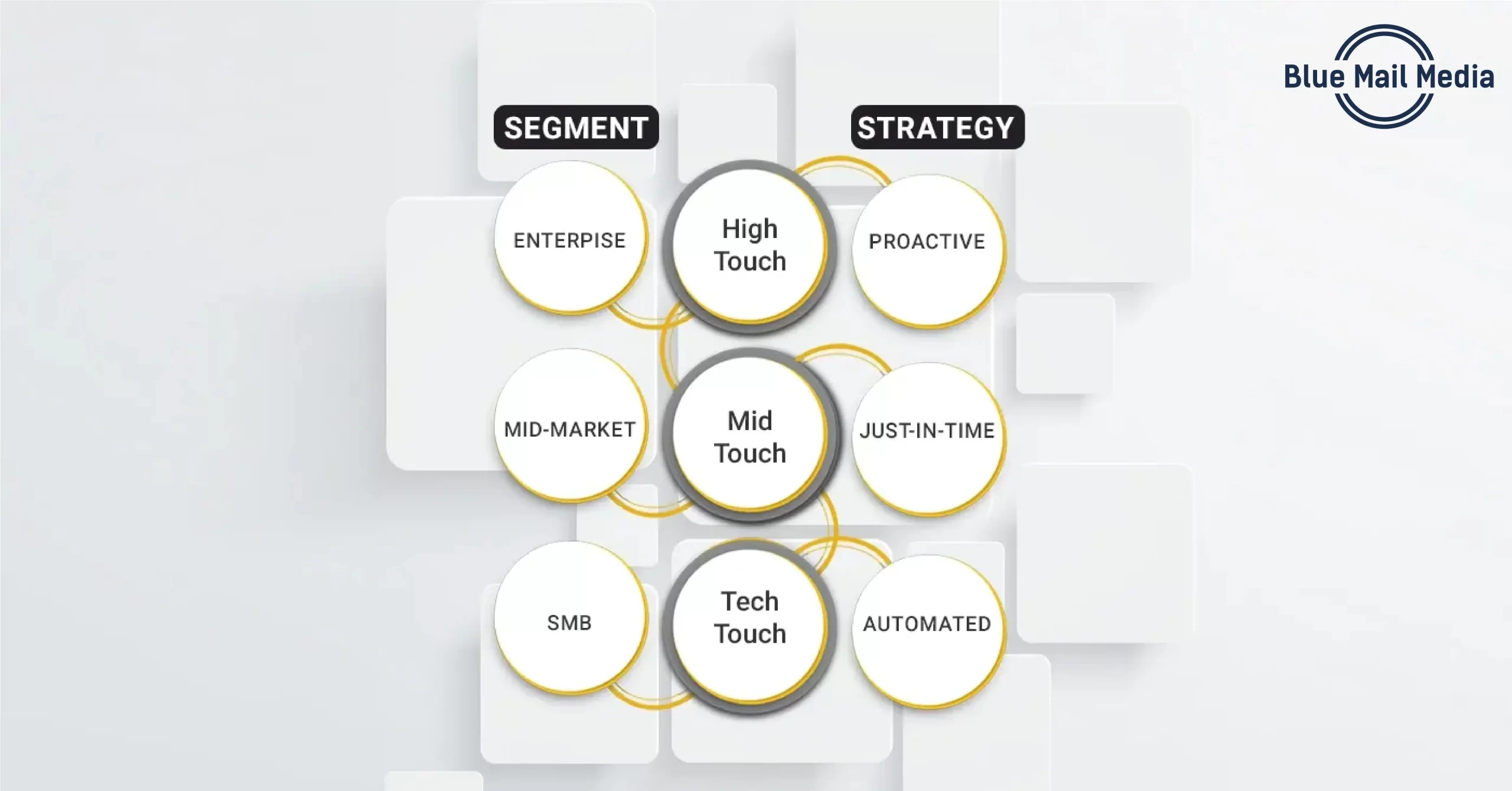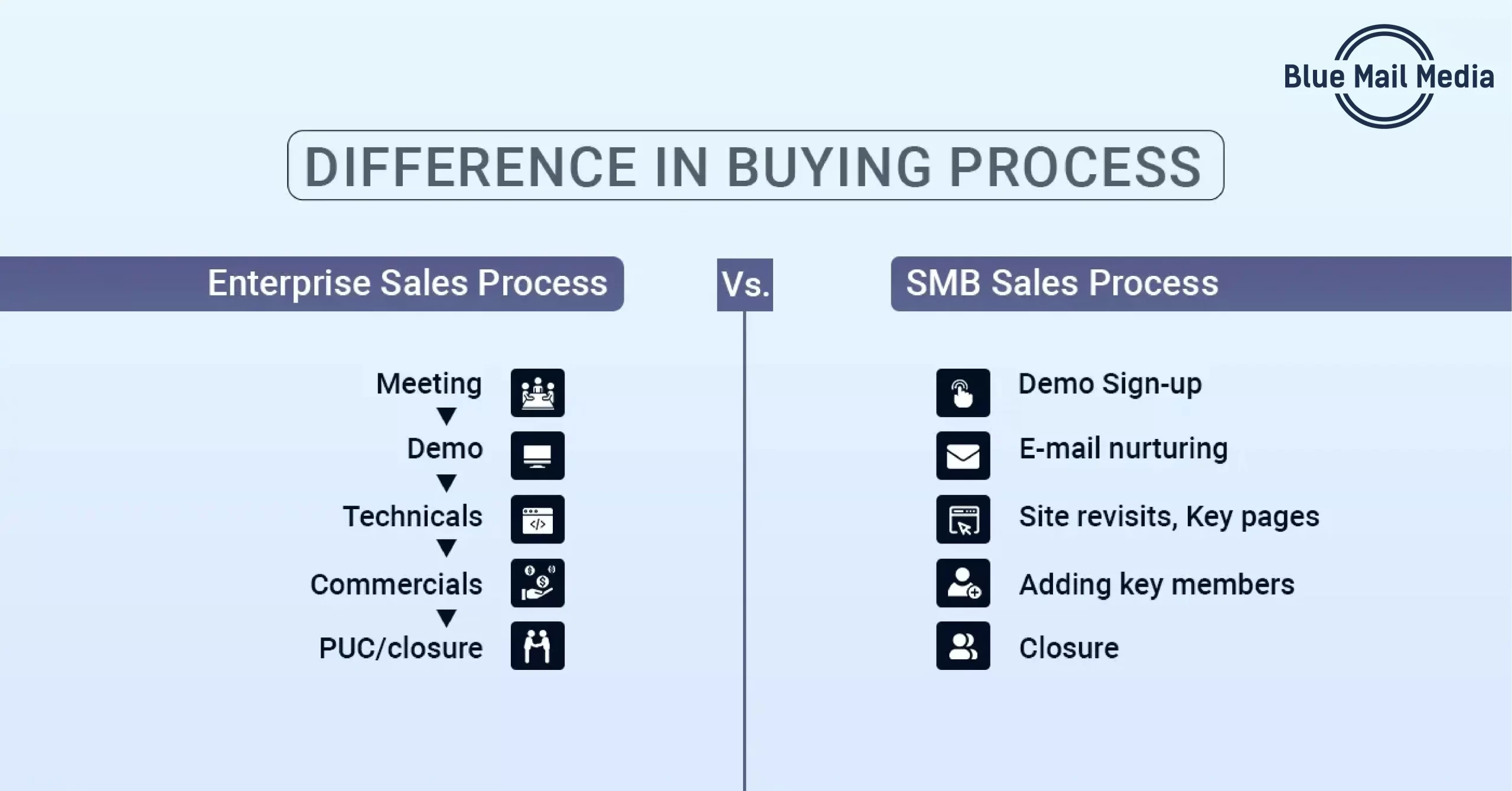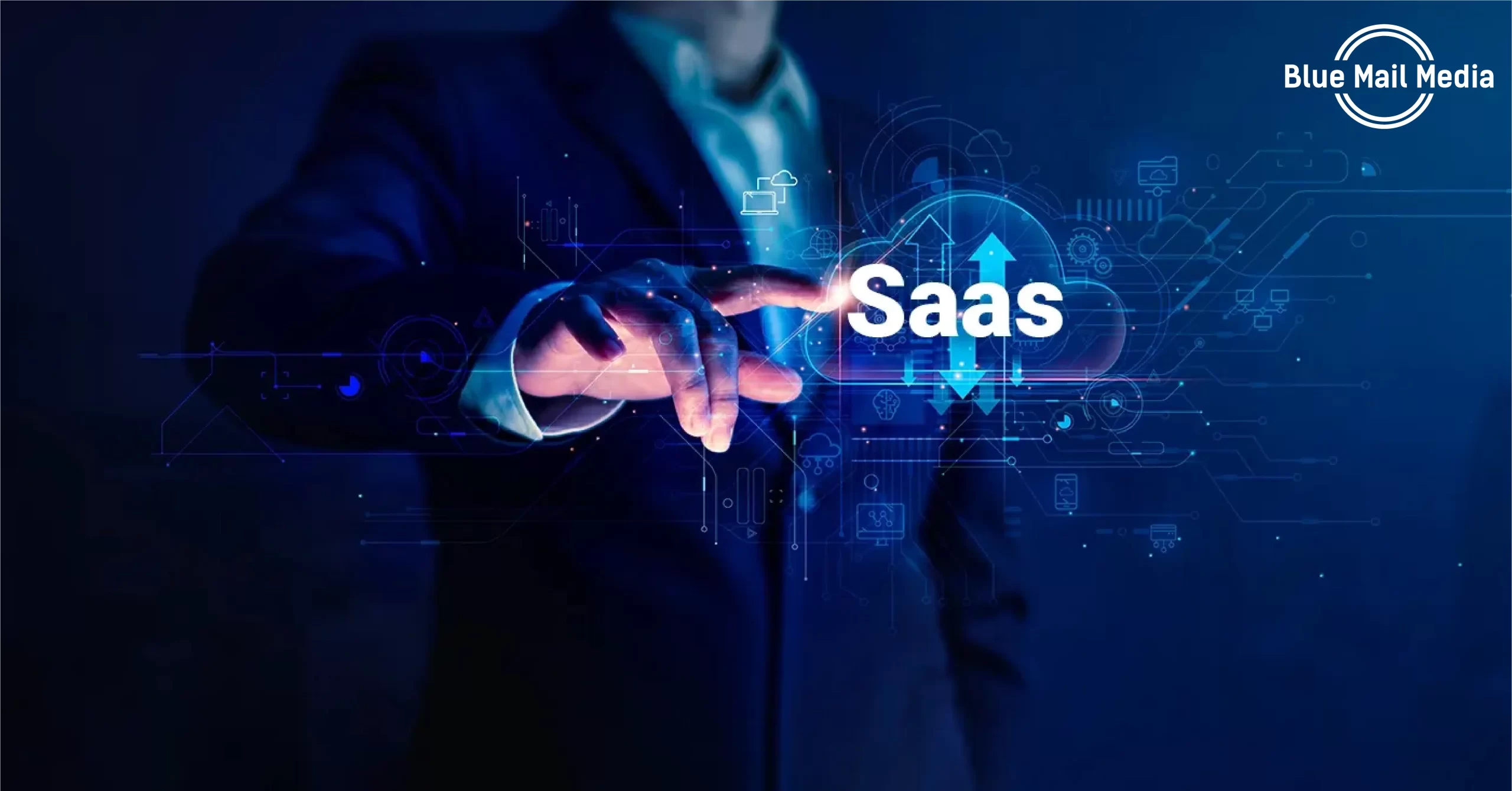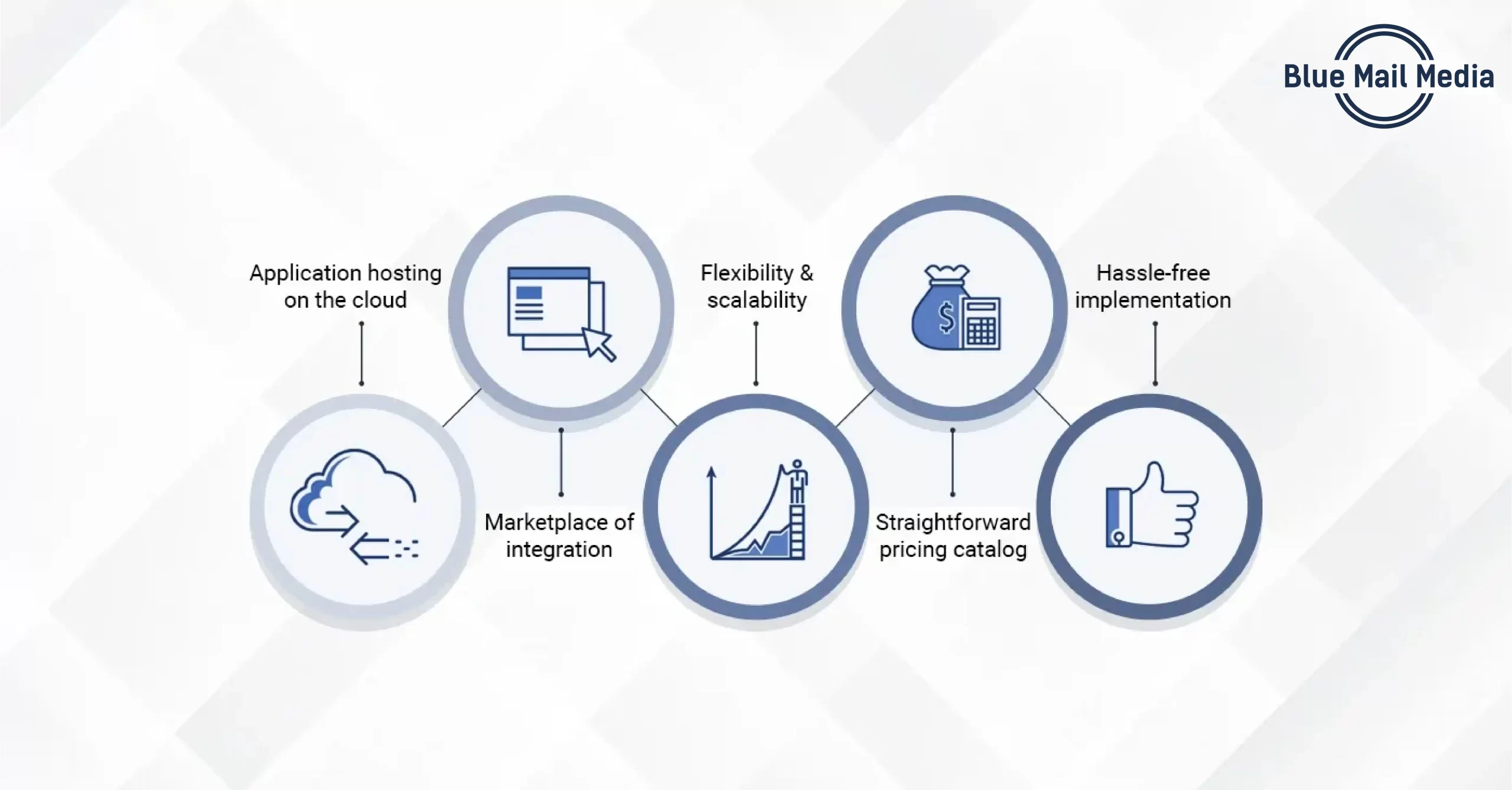The current state of the technological landscape has brought about the onset of cloud commerce, and it is here to stay. Without a spec of doubt, cloud commerce has revolutionized the way the buyer journey proceeds and processes that initially took months to finish can be dusted off in a couple of minutes.
In fact, a certain survey also states that about 88% of its participants leverage cloud services on a daily basis.
Furthermore, the sheer size and revenue figures of the industry stand as a testament to the growth and innovation in the industry. The global SaaS market churns around USD 215.10 billion in a year, following a CAGR of 17.9% till 2029.
But, if you are new to the SaaS world, you should know that marketing to enterprises is a whole different ball game. There are certain factors, whose inclusion solidifies your marketing pitch and brings home a conversion.
So, how to sell SaaS to an enterprise? How is it different from marketing to an SME representative? What things must your company consider before launching your campaign?
Read on to find out!
Ways to Catch Enterprises with Your SaaS Marketing Pitch
The SaaS industry has multiplied in size and has grown exponentially 500% in the last seven years. So, if you want to monopolize on this growth, and bring in colossal ROI, turn your attention towards offering your services to enterprises.
In this section, we primarily focus on various ways to pitch SaaS software to enterprises. And while pitching to enterprises, you must keep the following thumb rules in mind:
1. Focus on your targeted app portfolio
As the heading implies, you first need to formulate a diverse app portfolio. But is the portfolio so important?
Well, think about it this way. Let’s say you walk into a store, and see the shelves stocked to the brim. As a B2C customer, that would make you happy. But if you are a B2B client, too many options can be overwhelming and will cause unnecessary clutter.
Targeting plays a heavy hand in this scenario, and your portfolio must be customized to the preferences of the client you are trying to land. Once you curate the best possible choices for the client, you can guide them toward solutions, driving away their pain points.
Essentially, your portfolio must follow a ‘Land-Engage-Expand’ format. You can steer the buyer journey this way, have greater insight into the client’s needs, and ultimately have a higher chance of a conversion.
2. Understand your ability to survive long sales cycles
Getting into the gritty technicalities of it, if you are new to enterprise deals, they don’t exactly close fast. In fact, an enterprise deal takes about 6 to 18 months to finalize.
So before you ask yourself, “How to sell software at enterprise level?“, first ponder, “Can my company survive the unforgivingly long sales cycle?”
In case you cannot sustain yourself for that long, you might have to take a step back. You can test the waters first, deal with smaller SMBs, and garner your momentum. Once you do that, you push upstream toward enterprise clients.
However, the rules to sell SaaS to enterprises differ starkly from what you leveraged to entice SMBs. Some of the noted differences are as follows:
Enterprises will always look for customization in software. Even if your product is ready-made, they will expect a customized version to cater to their unique requirements.
- Enterprises have majorly shifted to SaaS products that come with cloud storage offerings. Ergo, an on-premises version of your offerings won’t yield many conversions.
- Should you wish to make enterprise deals, you will be expected to bring along an account exec Enterprises are definitely not fans of a self-sign-up approach.
Furthermore, enterprises are quite strict about their security needs. Moreover, they also want maximum control over all their data and users. They often have their own contract drafted by the organization’s legal department.
3. Get the pricing right
The pricing scheme and pattern of enterprise-level SaaS deals will offer a massive markup to your set plan prices. However, keep in mind that although you are in talks with such a massive organization, you won’t be a stranger to negotiations and discounts.
So, keep in mind that you must initially quote a very high value, giving you enough wiggle room to pocket that markup still.
Furthermore, since they paid the “premium” price, provide them with access to “expensive” support and training packages.
However, never sign the deal if anything less than a 1 or 2-year contract is offered to you. Enterprise deals will be very cumbersome, should they be carried out on a monthly renewal basis.
The takeaway here would be that enterprise deals are always high-revenue clients, and signing a single one can completely revamp your company’s financials. Hence prospecting the bigger enterprises for pitching could be the initial step and looking for ways to connect with target C-level executives could be the next step and this is where a verified and updated C-level executive’s email list becomes handy, and practice hyper-targeted marketing for ROI growth. Make sure you offer bundle apps with core services
On top of heavy personalization, enterprises also appreciate good deals. As a result, the concept of ‘bundles’ grew in popularity, and they have now almost become a staple in enterprise-level deals.
However, keep in mind that constituents of the bundle must work together to simplify processes, and not further complicate them. For instance, multi-app bundles might make things confusing for the sales cycle, as well as the sales message.
So, what you could do instead is package your apps with some of your correlated core services. For instance, if you are offering a mobile broadband solution for the employees of a particular enterprise, you could also provide services like a Microsoft 365 subscription, a tablet device, and so on. This will usher in significantly high user interest, since it assists in streamlining processes and offers great value.
Alternatively, let’s say you offer a bundle package containing Microsoft Office 365, Team disk, Symantec, etc., on top of your onboarding services. On the exterior, this does look like a great bundle package. However, the problem with it is that it tries to simplify too many challenges at once, in turn making the overall process quite convoluted.
Furthermore, a vast majority of enterprise users requested an “unbundling”, since they already had some of the bundled tools in their existing technology stack.
4. Entice them with client-centric solutions, and not individual features
Should you wish to sell your services to enterprises, you need to bring a completely different mindset. How to sell SaaS to enterprise? Well, your sales teams need to understand the importance of putting the needs and challenges of the client first.
Consequently, you will be able to identify various gaps in your existing marketing strategy, and you can come up with clever ways to dissolve these pain points.
To convert yourself from a salesperson to a trusted counsel, you must first bring down client churn, and boost cross-selling opportunities.
Here are some pointers you must definitely keep in mind before marketing to enterprises:
- Familiarize yourself with solutions very unique to your niche. There can be issues pertaining to data ownership, security, and so on.
- Offer clear ROI and TCO (Total Cost of Ownership) savings from your overall sale
- Filter out the client’s pain points and offer personalized solutions.
Wrapping up
So, how to sell software at the enterprise level? The above-mentioned ways break down a plethora of tips and tricks you can use to navigate the rocky road that is enterprise deals.
Although your services and offerings might follow a standard approach, customization plays a very important part in enterprise deals.
Consequently, a lot more personalization goes into closing an enterprise-level deal. Should you wish to market to decision-makers from your target enterprises, you should take advantage of B2B Contact Data.
Pay close attention to the selects mentioned in the above article, and leverage accurate contact information to make your first move towards business with enterprises.

